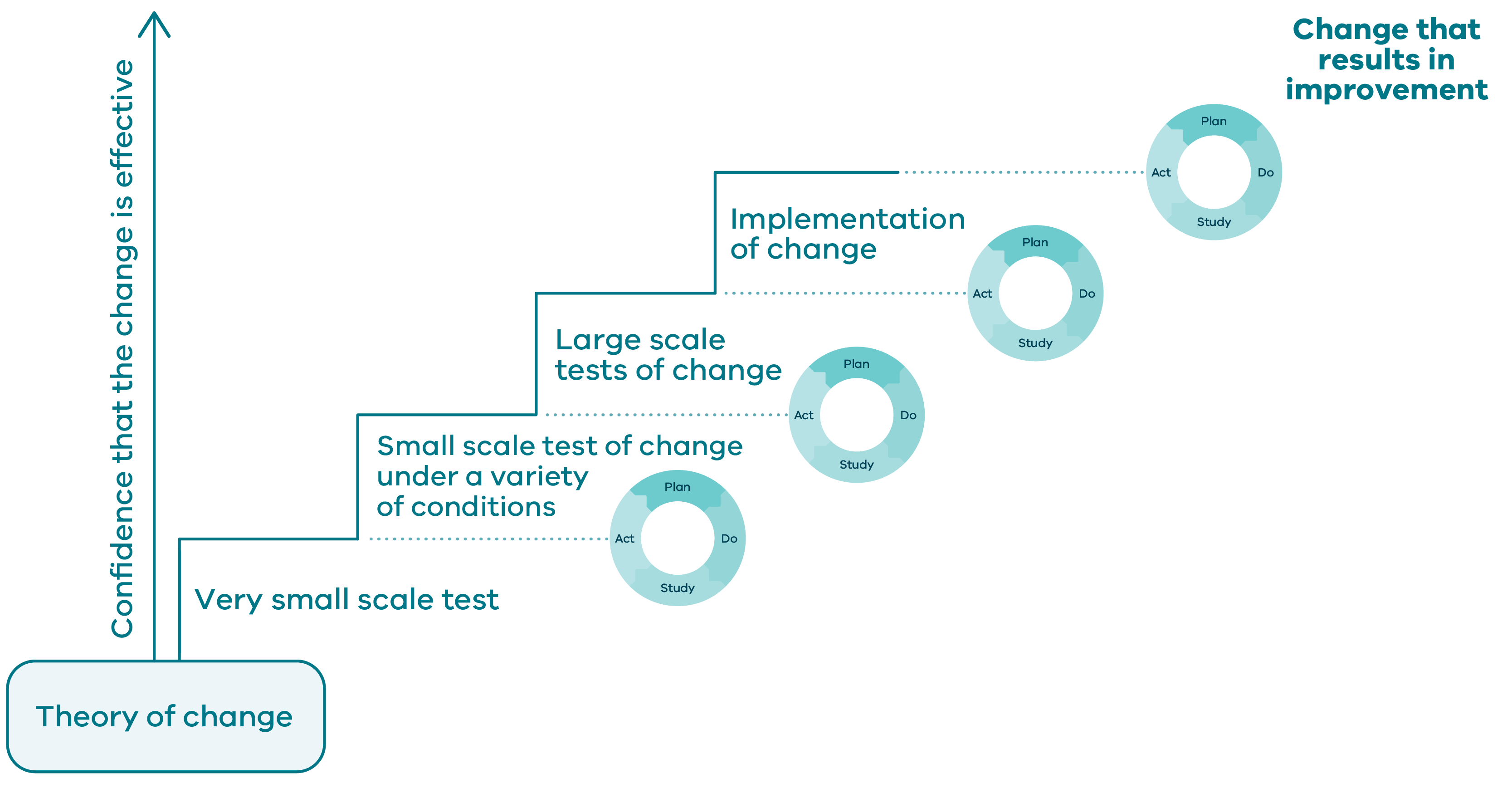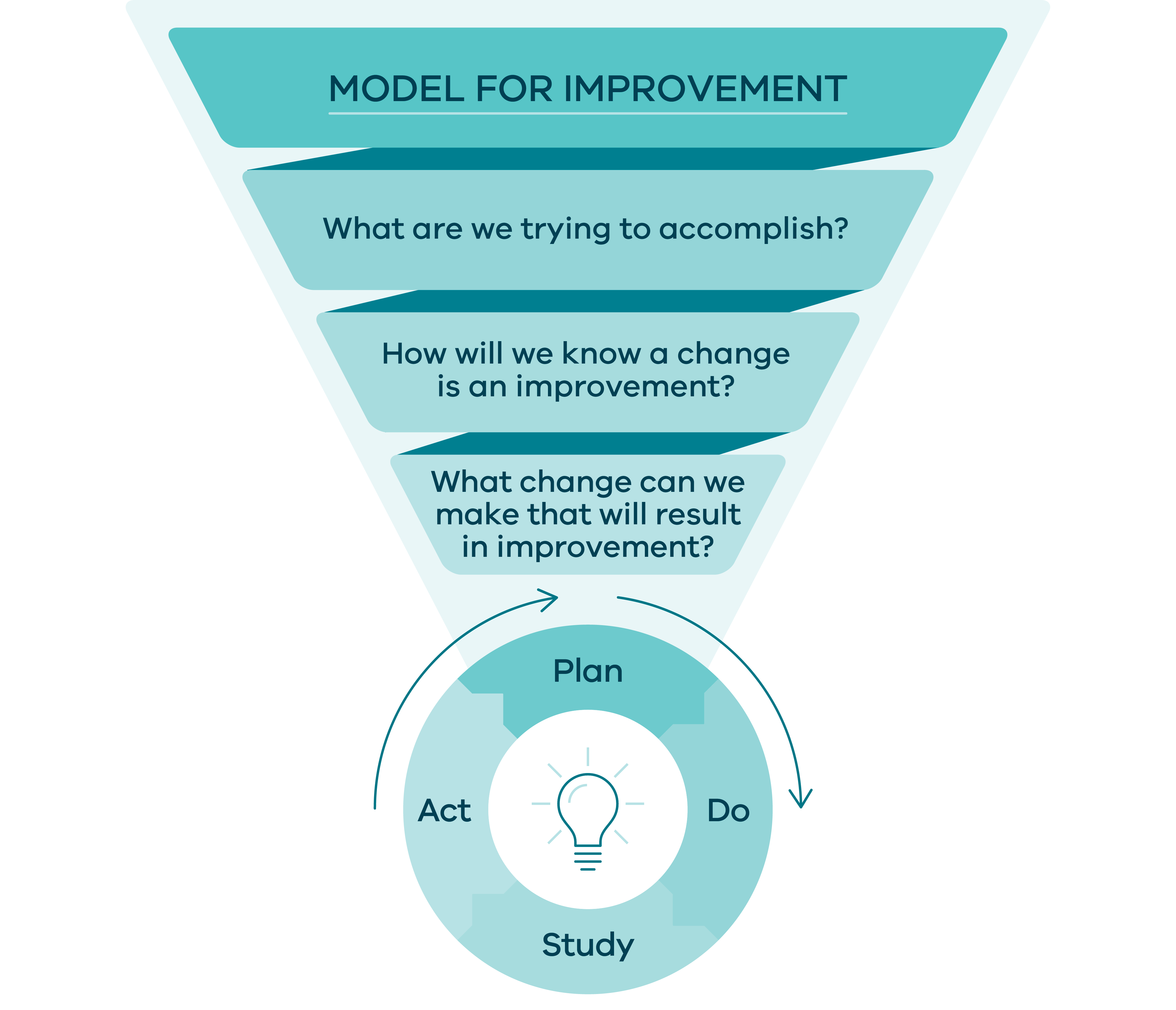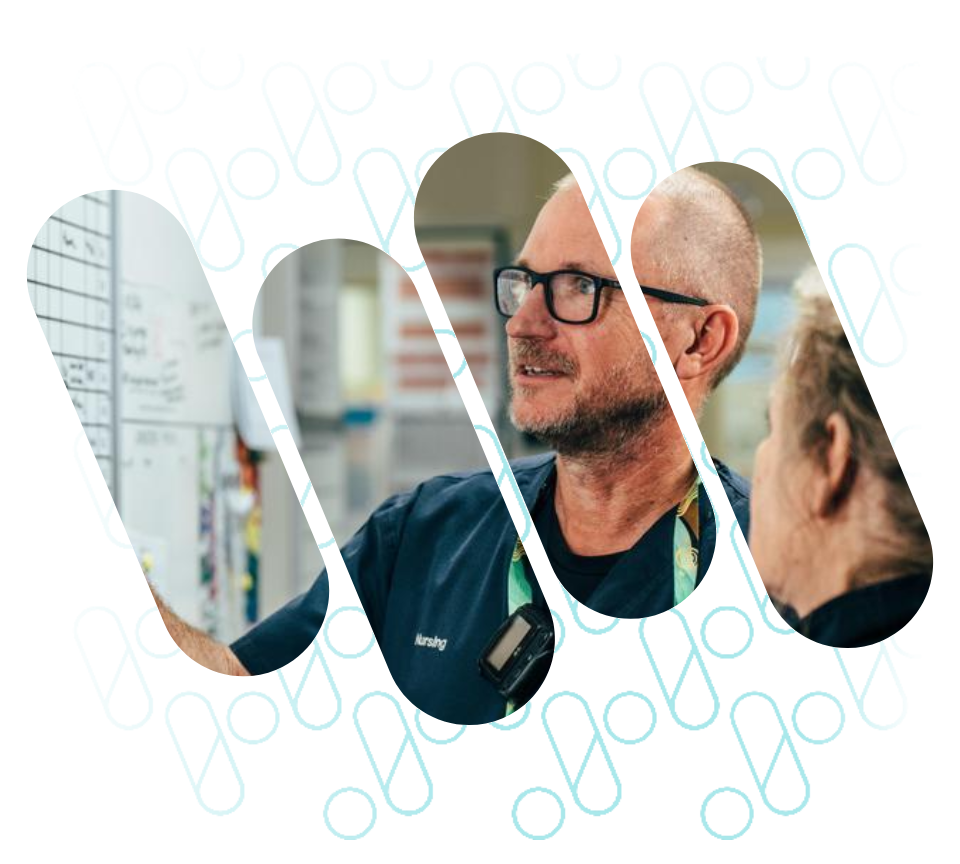- Large-scale collaboratives and smaller-scale pilots
- Projects targeting common problems and opportunities across Victorian health services.
How they work
We partner with consumers, clinicians, researchers and health system leaders to:
Explore the idea
Define a specific problem or opportunity.
Design the project
- Form an Expert Working Group (EWG)
- Understand the problem by reviewing the current data and literature
- Set goals that are measurable and time-bound
- Develop a Change Theory or Change Package to test
- Plan how the change will be measured, implemented, and disseminated.
Test the changes
Test the changes through successive Plan-Do-Study-Act (PDSA) cycles.
Evaluate and share the results
Evaluate the impact and effectiveness of the change and share the results.
Projects status
Upcoming projects
Here we engage stakeholders to identify an improvement opportunity, design an approach, define project goals and plan how these changes will be tested.
Active projects
The improvement idea is now being put into action. Teams are testing and refining their interventions, collecting data and evaluating progress to determine what works best in their setting.
Completed projects
The project has finished its evaluation phase. Key findings, outcomes, and insights are documented and shared across the healthcare sector to support broader improvement efforts.
Project design and scale
The design of each project depends on the context, scope, size of opportunity, available evidence and confidence in the change theory.
Innovation
Innovation projects design and test new or novel interventions through two 90-day cycles.
Pilot
Pilot projects involve 8–10 teams that test and refine interventions on a smaller scale to ensure they are feasible and effective before broader implementation.
Collaborative
Collaborative projects involve 10–40 teams who work together over 6–15 months to achieve significant improvements in a specific area by sharing knowledge and best practices.

Our improvement approach
Our Model for Improvement is based on improvement science and emphasises iterative testing, implementing, spreading and scaling to learn what changes and which contexts produce improvement.
Our approach, methods and tools are derived from the Institute for Healthcare Improvement.

The model asks project teams to answer 3 questions that guide improvement:
- What are we trying to accomplish?
- How will we know that a change is an improvement?
- What changes can we make that will result in improvement?
Change ideas are tested through successive Plan-Do-Study-Act (PDSA) cycles to learn how effective the changes are in contributing to the outcomes:
- Plan – develop a plan to test the change
- Do – carry out the test
- Study – observe and learn from the consequences
- Act – make modifications to the test.
Each project provides an opportunity for healthcare workers and consumers to learn more about undertaking effective improvement efforts, allowing us to build a network of experts who can expand the work across Victoria.
Build your capability in improvement science
We offer training resources, toolkits and online training to help develop capability in quality and safety improvement.

